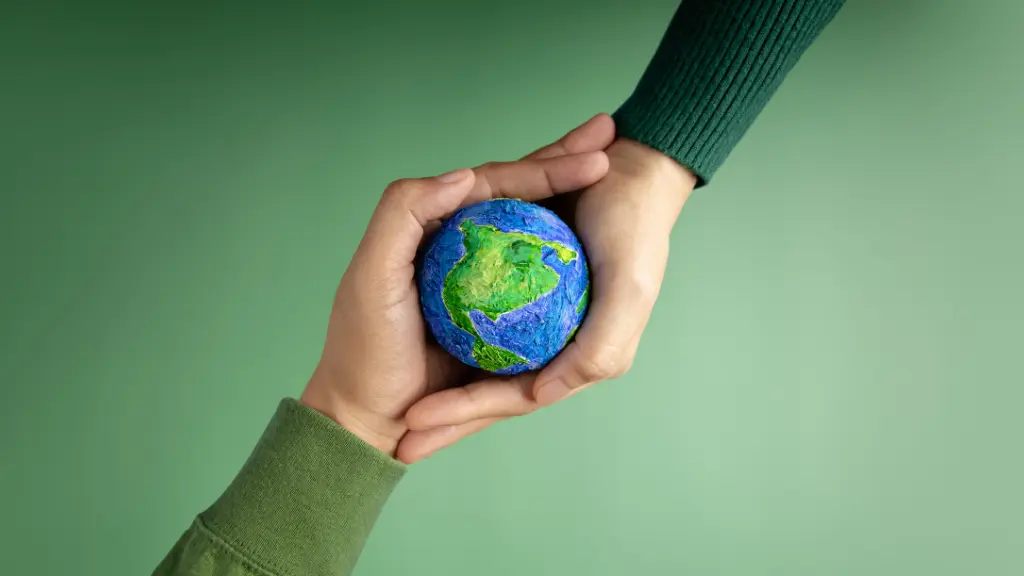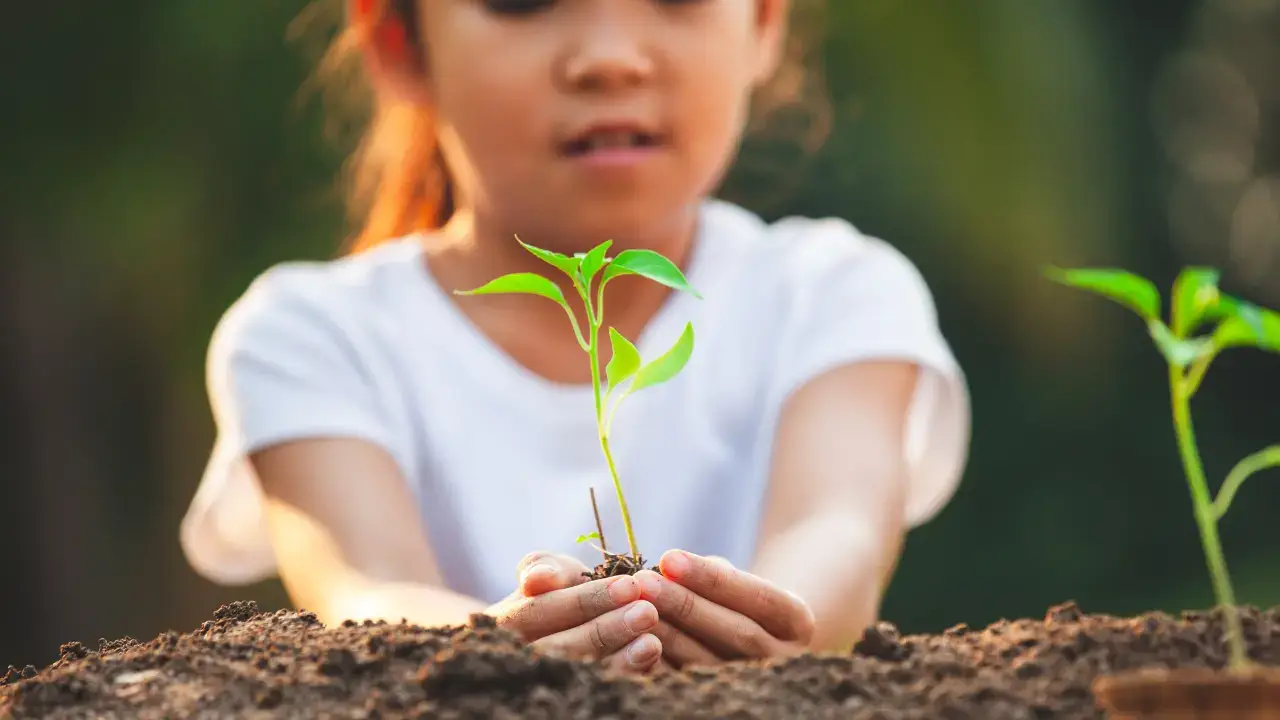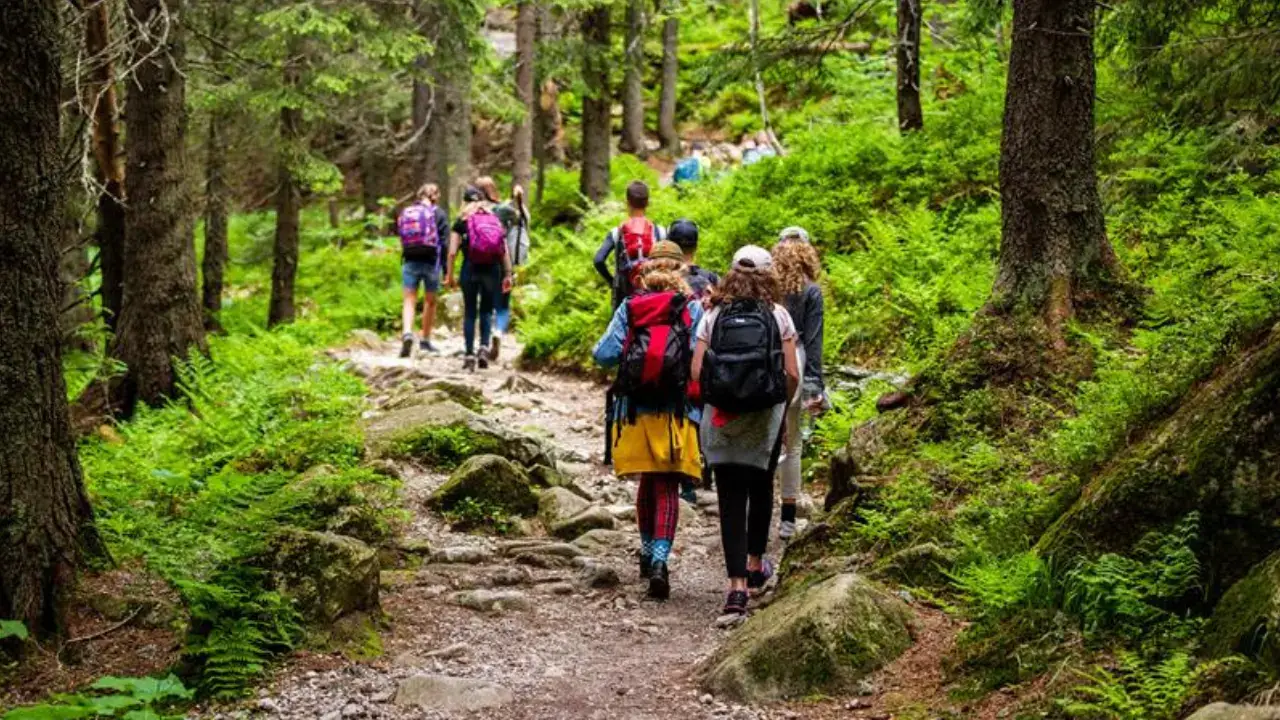Sustainability for Kids: The Power of Small Changes and 10 Easy Eco-Friendly Habits
- Parents, Teachers
- April 22, 2025
- Viva Education

Turning off unused electronics can help reduce your home’s energy bill by 10%. Reducing your shower time by just a minute each day can help conserve around 75 gallons of water every month, adding up to nearly 300 gallons (1136 Litres) saved monthly for a family of four!
Imagine if millions of kids made small changes like this every day—Sustainability for Kids in action!
The WHO-UNICEF-Lancet Commission says that children aren’t just the future; they are influential change-makers today. According to UNICEF, kids are more vulnerable to environmental problems like air pollution and dirty water. However, they also have great potential to build lasting habits and learn eco-friendly behaviours at a young age. This is because children are naturally curious, creative, and good at remembering habits.
Teaching kids about sustainability is more than just helpful; it’s necessary. By introducing kids to environmental activities and teaching them the concept of sustainability, we equip them to become thoughtful and responsible citizens. Children who learn eco-friendly habits early are more likely to practice sustainability throughout their lives.
In this blog, you’ll find 10 simple, science-backed eco habits that are easy to start now. These habits are fun, impactful, and perfect for families, classrooms, or community groups who want to make a difference!
Why Environmental Education Matters
By helping them understand how nature works and why it matters, we lay the foundation for them to become caring and responsible adults, developing a deeper understanding of what sustainable living entails and an attitude of caring for the natural world.
- Cultivating Awareness
Children’s natural curiosity flourishes when they engage directly with the outdoors. Activities like identifying local bird species or mapping a school garden transform ecological concepts into tangible, memorable experiences.
Initiatives like nature walks combined with classroom discussions help students connect textbook science to real-world ecosystems. For example, programs like Eco-Schools, a global initiative found in over 70 countries, encourage hands-on environmental learning through school-led sustainability projects.
By integrating outdoor experiences with academic learning, these approaches not only deepen understanding but also instil a lasting enthusiasm for environmental activities in students, encouraging them to embrace eco-friendly habits.
- Instilling Sustainability Principles
Incorporating simple daily habits, such as switching off unused lights, reusing jars, and using cloth bags, helps children understand that small actions can have a significant environmental impact, creating awareness of sustainability for kids and the need for mindful choices. Engaging them in tasks like sorting waste, saving RO water for plants, gardening, or composting makes sustainability part of their routine. These activities show that eco-friendly choices don’t require significant changes, just mindful practices. By embedding sustainability into everyday life, children develop habits that foster long-term environmental responsibility, which improves their understanding of sustainability and promotes an eco-conscious culture.
- Building Critical Thinking Skills
Engaging students in environmental activities through hands-on projects, such as designing rainwater harvesting systems or analysing local pollution levels, significantly improves their critical thinking skills. These real-world problem-solving activities encourage students to question, analyse, and develop solutions, cultivating a deeper understanding of sustainability’s meaning and promoting active participation in environmental activities.
Research indicates that environmental education not only improves academic performance but also improves critical thinking abilities, decision-making skills, and leadership qualities. By exploring topics like climate change, pollution, and conservation through hands-on activities and community-based projects, students build essential life skills such as critical thinking, leadership, and responsible decision-making.
This type of learning encourages young minds to see themselves as part of the solution, boosting their confidence and motivation to protect the planet. It’s not just about learning facts, it’s about nurturing future-ready citizens who understand the value of sustainability and are inspired to take action.
- Cross-Curricular Learning
Environmental topics naturally connect different subjects, making learning more engaging and meaningful. For example, students might explore climate in science, measure plant growth in math, or create illustrations of ecosystems in art. These cross-curricular activities help reinforce academic concepts while promoting collaboration and problem-solving. By linking school subjects to real-world environmental issues, students deepen their understanding and also become more motivated to participate in sustainability efforts. It’s a practical way to nurture both academic growth and eco-conscious thinking.
- Building a Sustainable Future
In India, student-led initiatives have had a significant impact. For instance, over 13,500 volunteers from the “Change Is Us” movement have removed more than 375 tonnes of waste from Girgaum Chowpatty in Mumbai, Maharashtra, demonstrating the power of youth-led environmental action.
Additionally, the Versova Beach cleanup in Mumbai, initiated by local volunteers, has successfully removed over 20 million kilograms of plastic waste, which has significantly improved marine life and community awareness. These examples highlight the profound influence of early environmental education in fostering a generation committed to planetary health.
Thus, environmental education is more than a school subject; it’s a way to raise thoughtful, kind, and conscious citizens of tomorrow. By starting early and keeping it fun, we give children the tools to care for the planet and build a better future for all.
10 Easy Eco‑Friendly Habits for Kids
1 .Turn Off & Unplug
The energy-saving practice involves children turning off all lights, chargers, and unused electronics. Create a checklist with the names of rooms and devices that need to be turned off. Kids can go room by room, acting as energy-saving detectives, checking off each item they’ve turned off on their sheet. This makes the task interactive and exciting, turning it into a game.
By practising this habit, families can reduce electricity waste and save around 8,000 rupees a year on home electricity bills simply by turning off unused devices. You can also create the exciting “Power-Off Scavenger Hunt” game with stickers to track progress while planning this activity.
2. Reuse Before You Buy
Reusing items replaces the need to purchase new items for children. Refillable water bottles, cloth bags, and old containers are great examples. One reusable bottle can block the production of 156 plastic bottles from waste in a year. To add creativity to the session, let children decorate jars and transform old shirts into tote bags.
3. Practice Recycling
Once children learn the basics of recycling, sorting materials like paper, plastic, and glass becomes second nature. To make this task even more enjoyable, you can colour-code recycling bins for each material and create a weekly check-in to see how well everyone’s doing. For an added touch of creativity, let kids decorate their bins and play a game like “Guess That Item,” where they match objects to the correct bin. This approach not only helps reduce waste but also encourages kids to take pride in their recycling efforts.
4. Save Water
Teaching children to take shorter showers and turn off the water while brushing their teeth are simple yet effective way to conserve water. Setting a five-minute shower timer and installing water-saving fixtures can also make a big difference. By reducing shower time by just one minute each day, families can save thousands of litres of water annually. These small changes help instil water-saving habits in children, encouraging them to adopt sustainable practices that will last a lifetime.
5. Grow Something Green
Gardening teaches patience, responsibility, and a love for the natural world. Kids can follow plant growth and observe changes, whether it’s a windowsill herb garden or planting seeds in the backyard. This hands-on activity also improves their focus and understanding of science. Hosting a seed-planting party or keeping a nature journal with leaf rubbings adds even more joy.
6. Walk & Bike More
Walking or biking instead of driving a car is a good form of exercise and helps reduce carbon emissions. Walking one mile saves 400 grams of CO₂ from entering the air. Making safe routes and packing a small “walking picnic” turns everyday tasks into mini-adventures. Planning a “Bike to School” day with custom route maps can also make it a fun community day!
7. Cut Down on Paper
By using tablets or digital tools for drafts, kids learn to minimise paper waste. This reduces the number of trees cut down and the water used in paper production. Two-sided printing can halve paper usage alone! Launch a “Paper-Saving Pledge” at school and include a digital art contest to spark interest.
8. Pack Eco-Friendly Lunches
Lunch preparations do not need to produce any disposable waste. Consuming meals with homemade napkins, beeswax wraps, and metal utensils reduces hundreds of single-use items annually. India has a per capita plastic consumption of around 11 kg per year. The kids can produce their zero-waste lunch box kits, which they will showcase during a lunchbox presentation event.
9. Inspire Curiosity About Wildlife
Engaging children with nature through books, outdoor activities, and wildlife videos helps them develop a deep affection for the environment. Studies show that even a single visit to nature can improve attention span by 20% and enhance memory functions. In addition, watching wildlife-focused TV channels like National Geographic or the Discovery Channel can spark curiosity and deepen their connection to nature. By establishing routines like “Wildlife Hours” or keeping a nature journal, children can cultivate a lifelong relationship with the natural world. These activities, coupled with outdoor activities like birdwatching, excite them and also encourage mindful observation of nature, planting the seeds for future environmental stewardship and a desire to protect wildlife and habitats.
10. Join or Organise a Cleanup
Friendly outdoor cleanups at parks and beaches with students enable them to experience firsthand the strength of group work and accountability. Volunteers during coastal cleanups consistently remove 22 pounds of trash in each hour they work. The design of these activities can be enjoyable because children can produce promotional material and put on gloves to collect trash while participating in photography and art events.
How Other Countries Teach Kids to Go Green
Singapore – Clean & Green Schools
Under Clean and Green Singapore, students engage in recycling drives, campus tree planting, and estate‑wide greening projects. In 2024 alone, volunteers, including NUS students, planted the 50,000th tree as part of NParks’ One Million Trees movement.

Japan – Responsibility Through Cleaning
Most Japanese schools dedicate 10–15 minutes a day to souji (classroom cleaning), teaching young people the importance of respecting shared spaces and taking collective responsibility. This custom helps keep communities exceptionally tidy.

Sweden – Nature‑Based Learning
Sweden’s forest school programs conduct regular classes outdoors, where students explore woodlands, identify flora and fauna, and learn through play. This immersive approach fosters environmental connection and hands‑on science learning.

Conclusion
Children build eco-literacy, critical thinking skills, and a sense of agency by weaving these simple, science-backed habits into their daily lives. Their small actions multiplied across schools and communities can yield substantial environmental gains as they grow.
Choose one habit this week, create a fun checklist with your child, and celebrate each step toward a greener future because every little change counts!
>> Please Share
Frequently Asked Questions:
1. What are easy sustainability activities for classrooms?
Teachers can set up recycling corners, nature walks, seed-planting projects, and “power-off challenges” to build green habits.
2. How can parents teach sustainability at home?
Make it fun—use checklists, eco-friendly games, DIY crafts, and include kids in recycling, gardening, and water-saving routines.
3. How can schools encourage eco-friendly habits?
Schools can run clean-up drives, eco-clubs, waste-sorting activities, and nature-based learning sessions.
4 What are some fun sustainability projects for kids?
Seed-bomb making, bottle-recycling crafts, wildlife journals, rainwater collection models, and beach cleanups.
5. Do small eco-friendly habits really make a difference?
Yes! Small daily habits, repeated by millions of kids, create huge positive changes for the planet.



